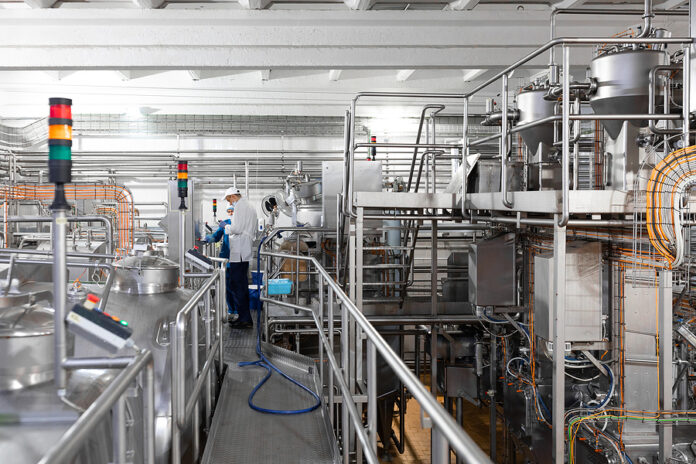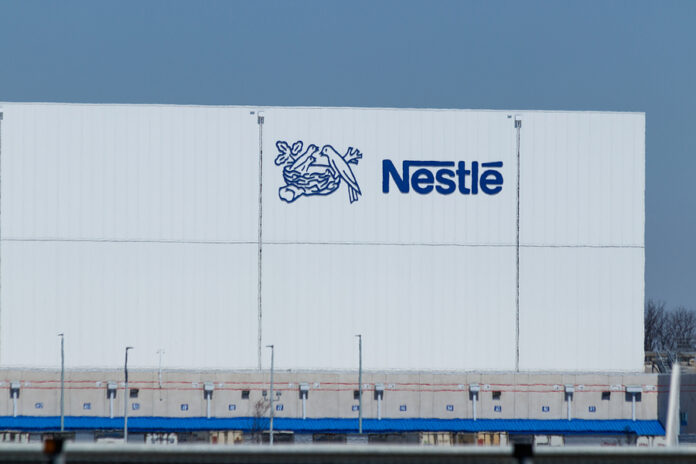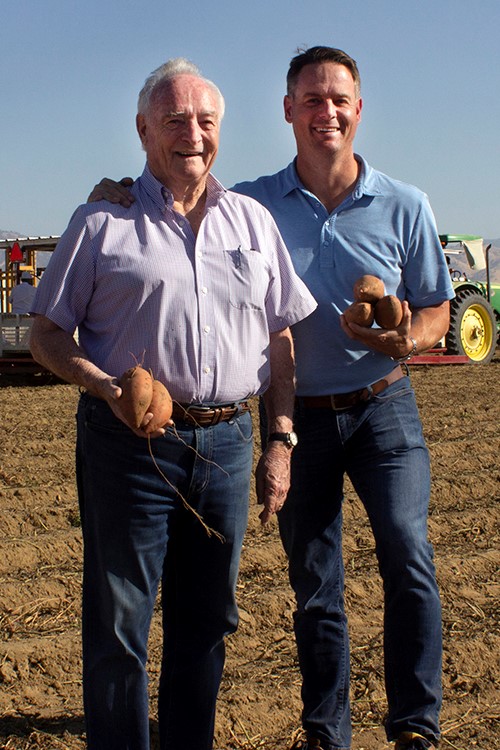
By Jon Fenton, CEO and Founder of FeTu
Key Takeaways:
- New developments in heat recovery technology now enables F&B manufacturers to reduce carbon emissions and costs without disrupting processes or putting quality at risk.
- This technology can generate annual savings of up to 25% by recovering and turning ultra-low temperature waste heat into free green energy.
- F&B executives, who have a high awareness of process and manufacturing costs, are already prioritizing investment in carbon emissions reduction as demands across the supply chain increase.
A trio of challenges
The food and beverage (F&B) industry is facing a trio of critical challenges.
Keeping operational costs low is more important than ever after a sustained period of high inflation and diminishing margins, but total UK food production costs rose 9.2% from March 2023 to March 2024 according to the Food and Drink Federation’s (FDF) State of Industry Report.
Neither price nor quality can be compromised as part of cost-efficiency drives however, with competition in the F&B manufacturing market remaining “high and steady” in the UK based on market research conducted by IBIS World, and consumers still feeling the pinch from the recent cost-of-living crisis.
On top of this, the industry, which is estimated to be responsible for up to a third of global greenhouse emissions according to a study by Nature food, faces looming environmental targets in the form of independent pledges and regulatory requirements.
But what if there was a way for F&B manufacturers to reduce their carbon footprint and costs without disrupting existing processes or putting quality at risk?
Technological innovation in F&B
The industry is no stranger to technological innovation. The launch of delivery applications has revolutionized the way people purchase food over the last decade and, more recently, AI is fast-tracking scientific research and helping businesses better manage stock.
Similar game-changing technology is being developed to handle the issue of waste heat in manufacturing.
However, there are several challenges to wide-spread uptake and adoption. Many of these are associated with insufficient past solutions, which could not operate under the right conditions and were not commercially viable.
But low-loss, high-efficiency heat recovery is set to change this.
The problem of waste heat
Globally, it is estimated that up to 50% of industrial energy input is lost as waste heat (according to the EERE).
In F&B, apart from pasteurization where 95% of heat is recovered, an estimated 8 Petajoules of heat is lost through manufacturing processes in the UK alone according to Renewable and Sustainable Energy Reviews, with re-use of lower temperature heat the biggest challenge to heat recovery.
In the past, the comparatively low efficiencies of such technology meant temperatures below 80 to 100℃ were insufficient to excite the process. But new high efficiency systems, with a lower excitement threshold, mean it is now commercially compelling to recover green energy from far lower temperatures.
An emerging solution
New technical developments mean that certain heat to power (h2p) solutions can now generate more green power, and therefore revenue, from a 40°C source than previously possible at 120°C, making temperatures below 80°C commercially viable for the very first time.
By integrating these new systems into the manufacturing process, bakeries, food processors, dairies, breweries, and distilleries can turn waste heat, which was previously of no value, into a lucrative clean energy source from temperatures as low as 40°C, reducing the heat wasted, reducing carbon emissions, and lowering energy costs.
Alleviating potential concerns
The reliability of new technology is critical for uptake. Manufactures cannot afford disruptions to supply or any impact on quality, so new technology cannot be seen to introduce too much risk.
To address reliability fears, these newly developed h2p solutions work in parallel with an existing thermal flow or rejection process. In the event of interruption or failure, the pre-existing process immediately comes back online automatically, with no risk to the product or process. The system will then default back to power generation mode once it is back online.
With margins incredibly tight, any new technology also needs to robustly demonstrate a quick return on investment. By producing clean energy from a waste product, this technology enables F&B manufactures to monetize an abundant waste product by effectively turning it into a free source of power.
This creates annual savings of approximately 25% and ensures that any CapEx costs are recovered quickly, within 3 to 5 years. Furthermore, it reduces a business’ exposure to volatile energy prices by producing and using energy “behind the meter” to offset and realize full value electricity, preferential to a feed in tariff.
Another concern is the required preparations on site with some technologies needing excavations or groundwork. New skid or container supplied systems are modular, compact, and lightweight needing only a sound, level area within a room or building, or they can be sited outdoors.
Finally, as plants come in all shapes, sizes, and set-ups, it can be easy for F&B manufacturers to think new technologies will not be applicable to them. But as well as being compact and lightweight, these systems are simple, flexible, and easy to integrate within the tightest of workspaces.
For example, in the case of food processing plants where steam is utilized for both power and heat throughout a site, often the steam is condensed down into hot water at the other end of the site to where energy is needed. In this instance, it’s not effective to pipe it back to the boiler for reheating as the process would mean all energy is lost, so it is frequently discarded just a mile away. A low-loss, high efficiency heat h2p system can be installed remotely to take full advantage of the high temperature water at its point of use and provide electricity at that point. Or it is simple to transport electricity over long distances when compared to a hot fluid.
Combined heat and power (CHP) plants often have a heat rejection system, such as a fin fan cooler, before the cooling water re-enters the turbine or engine. A low temperature h2p mounted in parallel can use this “waste” as its energy source to generate green electricity, even if the CHP is not natively green fuelled.
Environmental impact
Despite all the essential elements explored above – reliability, cost-reduction, flexibility, and lack of disruption, it is likely that environmental impact concerns will drive the up-take of this technology first and foremost.
With carbon levies coming, large food brands mandated to report on carbon, and an increased level of scrutiny on scope 3, all parts of the supply chain are under pressure to reduce emissions. More than half (55%) of manufacturers are already prioritizing investment in carbon emissions reduction according to the FDF’s 2024 report.
And consumers are demanding more eco-friendly products. According to PwC’s 2024 Voice of the Consumer survey, nearly half of consumers are buying more sustainable products to reduce their impact on the environment.
For F&B manufacturers, sustainable credentials can be the difference between profit and loss. Low-loss, high-efficiency h2p turns waste heat into valuable energy, which is 100% green, directly displacing carbon emissions. The systems themselves also have green credentials. They can use a range of zero global warming potential (GWP) working fluids and are 100% recyclable after a long, profitable, and productive life.
What’s next?
As F&B manufactures make investment decisions to address the ongoing quality, cost, and environmental challenges, technical innovations like newly developed h2p have a critical role to play and cannot be overlooked.
The introduction of flexible h2p is a major development in the difficult journey to net-zero. Combined with other initiatives such as more sustainable farming practices, recipe adjustments, and reduced, more eco-friendly packaging, the industry can make great sustainability strides in 2025 and beyond.
 Jon Fenton is a renowned mechanical engineer with four decades of experience serving the F&B and wider industries with bespoke technical solutions. He founded FeTu in 2016 an Innovation Driven Enterprise (IDE) specializing in fluid energy and Heat to Power (H2P) solutions, where he still presides as CEO.
Jon Fenton is a renowned mechanical engineer with four decades of experience serving the F&B and wider industries with bespoke technical solutions. He founded FeTu in 2016 an Innovation Driven Enterprise (IDE) specializing in fluid energy and Heat to Power (H2P) solutions, where he still presides as CEO.

Credit: Source link












